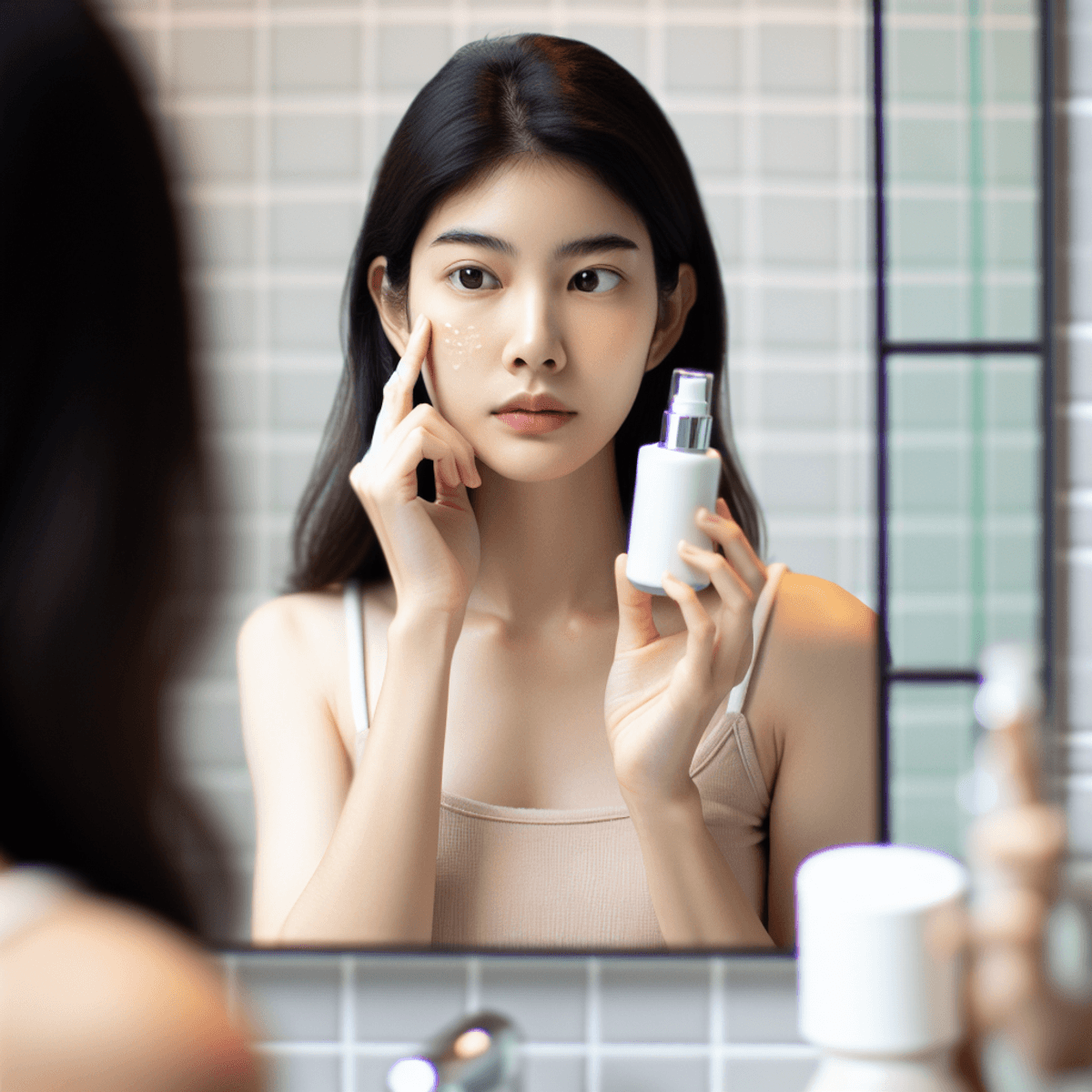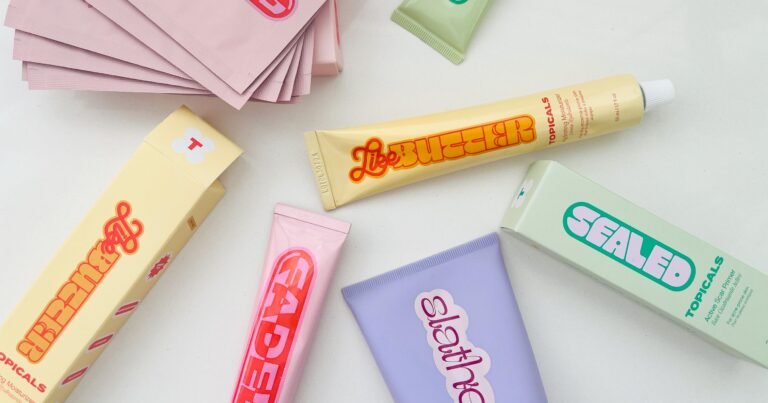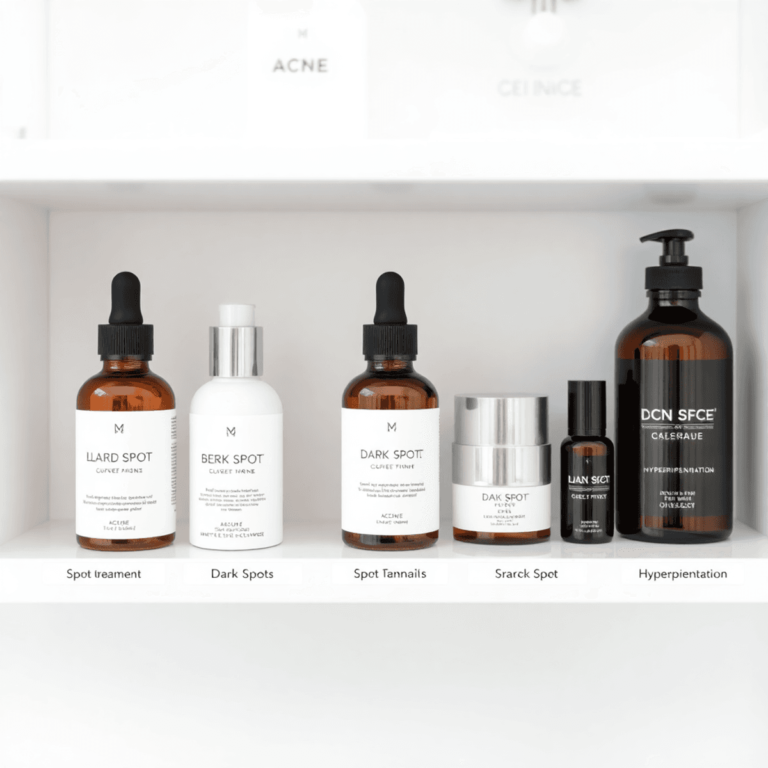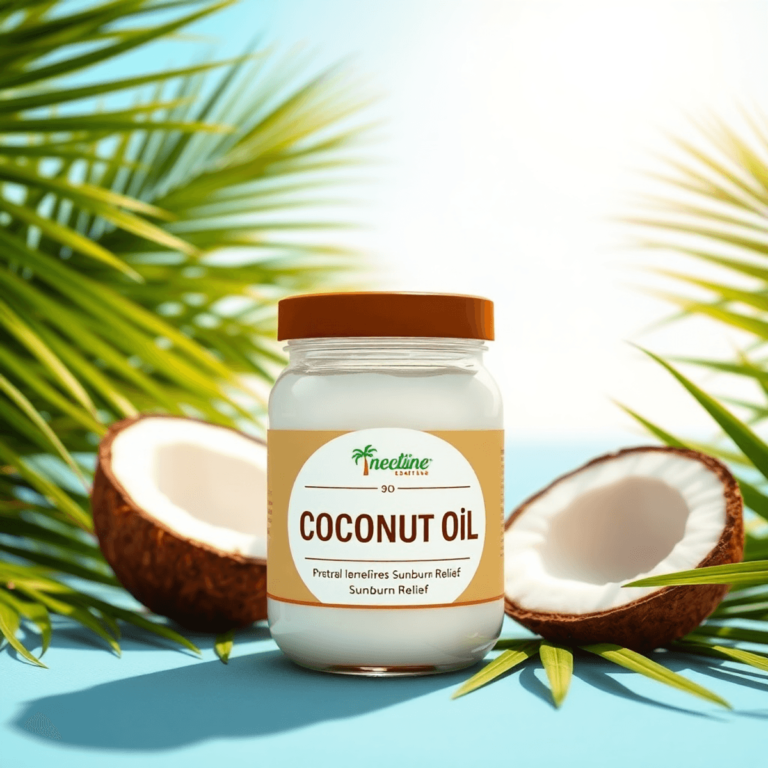How To Get Rid of A Pimple Overnight, According to Dermatologists

Introduction
Pimples are a common skin concern that can appear unexpectedly and often at the most inconvenient times. The urgency to treat them quickly is understandable, especially when you have a special event or an important meeting the next day.
This article explores how to get rid of a pimple overnight, according to dermatologists. We will look into effective methods recommended by skincare professionals to tackle this issue swiftly and efficiently. Whether you’re dealing with occasional breakouts or persistent acne, the tips shared here can help you achieve clearer skin by morning.
Understanding Pimples
Pimples, a common form of acne, are small skin lesions or inflammations that occur when sebaceous (oil) glands become clogged and infected. They can appear anywhere on the body but are most commonly found on the face. Pimples develop due to various reasons, including excess oil production, dead skin cells, bacteria, and inflammation.
Common Types of Pimples
- Whiteheads: Closed pores filled with oil and dead skin cells, appearing as small, flesh-colored bumps.
- Blackheads: Open pores clogged with oil and dead skin cells, with the surface turning black due to oxidation.
- Cystic Pimples: Large, red, painful lumps deep under the skin, filled with pus and potentially leading to scarring if untreated.
Factors Contributing to Pimples
- Hormones: Fluctuations in hormone levels, especially during puberty, menstruation, or stress, can increase oil production leading to breakouts.
- Bacteria: Propionibacterium acnes is a type of bacteria that thrives in oily environments and can cause inflammation.
- Diet: Foods high in sugar or dairy products may exacerbate acne in some individuals.
Understanding why pimples occur is crucial for effective treatment. Knowing the different types helps tailor your approach to get rid of pimples overnight.
Dermatologist-Recommended Methods for Overnight Pimple Treatment
1. Benzoyl Peroxide
How Benzoyl Peroxide Works on Bacteria That Cause Pimples
Benzoyl peroxide is a powerful topical treatment for acne, renowned for its ability to kill acne-causing bacteria. Specifically, it targets Propionibacterium acnes, the bacteria responsible for inflammation and pimples. By penetrating the skin and releasing oxygen, benzoyl peroxide creates an inhospitable environment for these anaerobic bacteria, effectively reducing their numbers and curbing infection.
Beyond its antibacterial properties, benzoyl peroxide also helps to clear out dead skin cells and excess oil from pores. This dual action not only treats existing pimples but also helps prevent new ones from forming.
Recommended Concentrations and Application Tips for Effective Results
When using benzoyl peroxide, it’s crucial to choose the right concentration to avoid irritation while still achieving effective results. Concentrations typically range from 2.5% to 10%. Beginners should start with a lower concentration (2.5% or 5%) as higher concentrations may cause dryness or peeling in sensitive skin.
Here are some application tips:
- Start Slowly: Apply a small amount once every other day to allow your skin to adjust.
- Night-Time Use: Apply benzoyl peroxide at night since it can increase your skin’s sensitivity to sunlight.
- Moisturize: Follow up with a non-comedogenic moisturizer to combat potential dryness.
- Spot Treatment: For targeted action, use benzoyl peroxide as a spot treatment directly on pimples rather than applying it all over your face.
- Consistency Is Key: Regular use is essential for maintaining clear skin. Incorporate it into your nightly skincare routine.
Using benzoyl peroxide effectively can significantly reduce the size and redness of pimples overnight, making it a go-to solution for urgent acne treatment needs.
2. Salicylic Acid
Salicylic acid is another powerful ingredient when it comes to treating acne with topical solutions. Its main job is to get deep into the pores and break down oily substances like sebum that block them. This process helps clear out the pores and stop new pimples from forming.
How It Works:
- Unclogging Pores: Salicylic acid softens and dissolves the plugs of dead skin cells that block hair follicles, helping the skin shed these cells more effectively.
- Preventing Future Breakouts: By reducing dead skin cell buildup and excess oil, salicylic acid makes it harder for acne to develop.
Recommended Products:
- Clean & Clear Advantage Acne Spot Treatment: Contains 2% salicylic acid and works quickly to reduce the size of pimples.
- Neutrogena Oil-Free Acne Wash: A daily cleanser with salicylic acid that helps keep pores clear.
- The Ordinary Salicylic Acid 2% Solution: Known for its formulation that targets visible blemishes while exfoliating the skin.
How to Use:
- Concentration: Most over-the-counter products have between 0.5% to 2% salicylic acid, which is effective for mild to moderate acne.
- Application Tips: Apply a thin layer directly on the pimple or use as part of your daily skincare routine. Avoid using too much as it can cause dryness or irritation.
Adding salicylic acid to your routine not only treats existing pimples but also helps prevent future ones from appearing.
3. Ice Application
Applying ice to a pimple can offer immediate relief by reducing redness and swelling. This method has gained popularity due to its simplicity and effectiveness.
Benefits of Ice Application:
- Reduces Swelling: Ice helps constrict blood vessels, which can significantly reduce the size of an inflamed pimple.
- Minimizes Redness: The cooling effect of ice can help diminish the redness associated with active pimples, making them less noticeable.
Proper Technique:
- Wrap Ice in a Clean Cloth: Direct application of ice can damage the skin. Always wrap it in a soft, clean cloth.
- Apply for Short Durations: Limit each application to 1-2 minutes to avoid frostbite or skin irritation.
- Repeat as Needed: You can repeat this process several times throughout the day, ensuring intervals between applications to allow the skin to warm up.
Ice treatment for pimples should be used cautiously. While it’s effective for temporary relief, it doesn’t address underlying causes like bacteria or clogged pores. For comprehensive care, consider other topical treatments like benzoyl peroxide or salicylic acid.
4. Cortisone Injections (For Severe Cases Only)
Cortisone injections provide a rapid solution for stubborn cystic pimples that refuse to respond to conventional treatments like benzoyl peroxide or salicylic acid. Administered by dermatologists, these injections deliver a potent anti-inflammatory steroid directly into the pimple.
When to Consider Cortisone Injections:
- Severe Cystic Acne: Ideal for deep, painful, and inflamed cysts that cause significant discomfort.
- Urgent Situations: Perfect for emergencies where quick results are essential, such as before an important event.
Expected Results and Recovery Time:
- Rapid Reduction: Expect noticeable reduction in swelling and redness within 24 to 48 hours.
- Minimal Downtime: Typically, there’s minimal downtime, allowing you to resume your daily activities almost immediately.
Potential Side Effects:
- Skin Thinning: Overuse can lead to skin thinning at the injection site.
- Temporary Discoloration: Possible temporary lightening of the skin around the treated area.
Cortisone injections stand out as a professional treatment option for immediate relief from severe acne. While effective, they should be used judiciously under the guidance of a qualified dermatologist.
5. Pimple Patches (Convenient On-The-Go Option)
Pimple patches are a popular and convenient option for overnight pimple treatment. These small, adhesive patches, often made of hydrocolloid material, are designed to absorb excess oil and pus from the pimple while creating a protective barrier against external irritants.
How They Work:
- Absorption: The hydrocolloid material in pimple patches draws out impurities from the pimple, helping to reduce its size and inflammation.
- Protection: By covering the pimple, these patches prevent you from touching or picking at it, minimizing the risk of further irritation or infection.
Ingredients to Look For:
- Hydrocolloid: This is the primary material that aids in absorbing fluids and promoting healing. Learn more about how hydrocolloid bandages work.
- Salicylic Acid: Enhances the patch’s ability to unclog pores and exfoliate dead skin cells, crucial for treating acne effectively.
- Tea Tree Oil: Offers natural antibacterial benefits that target acne-causing bacteria without harsh chemicals.
When selecting a pimple patch, checking for these key ingredients can enhance their efficacy and provide faster results. Pimple patches with these components can significantly improve your skin condition overnight.
6. Tea Tree Oil (Natural Alternative)
Tea tree oil is becoming more popular as a natural remedy for acne because of its strong antibacterial properties. This essential oil targets the bacteria that cause pimples, helping to reduce inflammation and prevent future breakouts.
How to Use Tea Tree Oil
When using tea tree oil, it’s important to do a patch test first. Here’s how you can incorporate it into your routine:
- Patch Test: Apply a small amount of diluted tea tree oil to a hidden area of your skin and wait 24 hours to make sure there’s no negative reaction.
- Dilution: Mix tea tree oil with a carrier oil (like jojoba or coconut oil) in a ratio of 1:9 to reduce irritation.
- Application: Use a cotton swab to apply the diluted mixture directly onto the pimple, focusing on the affected area without spreading it too much.
Why Choose Tea Tree Oil?
Tea tree oil can be an effective addition to your acne-fighting routine. Its natural origin makes it appealing for those seeking alternatives to benzoyl peroxide benefits and other chemical-based topical treatments.
However, it’s important to be cautious due to potential skin sensitivities, which is why patch-testing is crucial before adding it into your routine.
This method works well with other dermatologist-recommended treatments like salicylic acid effectiveness, ice treatment for pimples, and even professional options such as cortisone injections for severe cases.
7. Hydrocortisone Cream (Temporary Relief)
Hydrocortisone cream is a strong topical treatment that provides short-term relief for active pimples by reducing inflammation and redness. Applying a small amount of hydrocortisone cream to the affected area can significantly diminish the visible symptoms of a pimple, making it less noticeable overnight.
How it works:
- Reduces Inflammation: Hydrocortisone is a corticosteroid that lowers the body’s inflammatory response, helping to decrease swelling and redness.
- Calms Irritation: Its soothing properties can provide immediate comfort to irritated skin, making it an effective temporary solution.
Application Tips:
- Concentration: Use a low-concentration hydrocortisone cream (typically 1%) to avoid potential side effects.
- Usage Duration: Apply sparingly and limit usage to a day or two to prevent skin thinning or other adverse effects.
- Patch Test: Perform a patch test on a small skin area before full application to ensure no allergic reaction occurs.
Hydrocortisone cream should not be used as a long-term acne treatment but as an emergency measure for those unexpected breakouts. For persistent acne issues, options like benzoyl peroxide benefits, salicylic acid effectiveness, or professional treatments such as cortisone injections for acne may offer more sustainable results.
8. Blue Light Therapy (Innovative Technology)
Blue light therapy is an advanced technique that targets acne-causing bacteria, specifically Propionibacterium acnes. This bacterium plays a key role in the formation and inflammation of pimples. By using blue light, this therapy penetrates the skin to kill these bacteria without harming surrounding tissue.
How It Works
Blue light activates certain compounds within the bacteria, leading to their destruction. This reduces inflammation and helps in managing active pimples more effectively.
Overnight Potential
While blue light therapy might not completely eliminate a pimple overnight, it significantly decreases redness and swelling, making blemishes less noticeable by morning.
For those looking for a non-invasive, technology-driven solution to manage acne, blue light therapy offers a promising option. It pairs well with other treatments like benzoyl peroxide or salicylic acid for comprehensive acne management.
This method’s ease of use and effectiveness make it a valuable addition to any skincare routine aimed at reducing acne quickly.
Best Practices to Avoid Further Breakouts After Treating a Pimple Overnight
1. Avoid Picking or Popping Pimples (No Matter How Tempted You Are)
Picking at or popping pimples can be incredibly tempting, especially when you want to get rid of them quickly. However, dermatologists strongly advise against this practice for several reasons:
- Increased Inflammation and Redness: When you pick at a pimple, you cause additional trauma to the skin, leading to more inflammation and redness.
- Risk of Infection: Your hands and nails can introduce bacteria into the open wound, worsening the infection and potentially causing more pimples.
- Scarring: One of the most severe consequences of picking pimples is the risk of permanent scarring. The more you manipulate the skin, the higher the likelihood of leaving behind marks that are difficult to treat.
To resist the urge, consider these strategies:
- Keep Hands Busy: Engage in activities that keep your hands occupied, such as reading a book or knitting.
- Use a Pimple Patch: These patches not only help treat the pimple but also act as a physical barrier preventing you from touching it.
- Practice Mindfulness: Becoming aware of when and why you tend to pick at your skin can help you develop healthier habits.
Understanding these points can significantly help in avoiding further breakouts after treating a pimple overnight. It’s crucial to remember that while immediate relief might seem satisfying, the long-term consequences often outweigh any short-term benefits.
2. Use Non-Comedogenic Makeup Products (To Keep Your Skin Clear)
Using non-comedogenic makeup products is crucial for avoiding further breakouts after treating a pimple overnight. Non-comedogenic products are specially formulated to not clog pores, reducing the risk of new pimples forming.
Key tips for choosing non-comedogenic makeup:
- Look for Labels: Ensure your makeup explicitly states it is “non-comedogenic” on the packaging.
- Opt for Oil-Free Formulas: Oil-free foundations, concealers, and powders are less likely to contribute to clogged pores.
- Mineral-Based Makeup: Mineral-based products often contain ingredients like zinc oxide and titanium dioxide that do not block pores and can help soothe skin.
Examples of non-comedogenic brands:
- Neutrogena: Known for their skin-friendly makeup options.
- BareMinerals: Offers a range of mineral-based beauty products.
- Clinique: Provides various non-comedogenic makeup choices designed for sensitive skin.
Using these products helps maintain clear skin and supports the effectiveness of overnight pimple treatments, ensuring that your efforts in learning how to get rid of a pimple overnight, according to dermatologists, are not undone by pore-clogging makeup.
Long-Term Strategies to Prevent Pimples from Recurring After Successful Overnight Treatment
1. Establish a Consistent Skincare Routine (That Works For Your Skin Type)
Adopting a daily skincare routine tailored to your skin type is essential for preventing pimples. Consistency in your regimen helps maintain clear skin and reduces the likelihood of breakouts. You can find more detailed information about crafting an effective skincare routine in this New York Times article.
Key Steps in a Daily Skincare Routine:
- Cleansing: Use a gentle, non-comedogenic cleanser to remove dirt, oil, and makeup. Cleansing twice daily helps keep pores clear and reduces the chance of clogged pores leading to pimples.
- Toning: A toner can help balance your skin’s pH level and remove any residual impurities after cleansing. Look for alcohol-free toners with soothing ingredients like witch hazel or rose water.
- Moisturizing: Even if you have oily or acne-prone skin, moisturizing is crucial. Opt for lightweight, non-comedogenic moisturizers that hydrate without clogging pores.
- Sun Protection: Applying sunscreen is vital to protect your skin from UV damage. Choose a broad-spectrum SPF 30 or higher that is labeled non-comedogenic to prevent pore blockage.
Additional Tips:
- Exfoliation: Incorporate gentle exfoliation 1-2 times a week using products containing salicylic acid or alpha hydroxy acids (AHAs). This helps remove dead skin cells that can clog pores and cause pimples.
- Spot Treatments: Keep spot treatments with benzoyl peroxide or salicylic acid on hand to address any emerging pimples promptly.
- Hydration and Diet: Drinking plenty of water and eating a balanced diet rich in fruits, vegetables, and lean proteins can support overall skin health. Avoid excessive consumption of dairy and sugary foods, which may contribute to acne.
Monitoring Skin Changes:
Regularly evaluate how your skin responds to different products. Introduce new products one at a time to identify any potential irritants or allergens that could trigger breakouts. Consulting with a dermatologist can provide personalized advice tailored to your unique skin needs.
By maintaining these practices consistently, you create an environment where pimples are less likely to recur, ensuring clearer, healthier skin over the long term.
2. Make Healthy Dietary Choices (For Better Skin From Within)
Diet plays a crucial role in maintaining clear skin and preventing pimples. Certain foods can trigger inflammation and excess oil production, leading to breakouts.
Key dietary tips for better skin health:
- Reduce Sugar Intake: High sugar levels can spike insulin, leading to increased oil production.
- Consume Omega-3 Fatty Acids: Found in fish, flaxseeds, and walnuts, omega-3s help reduce inflammation.
- Avoid Dairy: Some studies suggest a link between dairy consumption and acne flare-ups.
- Stay Hydrated: Drinking enough water helps flush out toxins and keeps your skin hydrated.
- Eat Antioxidant-Rich Foods: Berries, nuts, and green leafy vegetables combat oxidative stress that can lead to acne.
Making these dietary adjustments supports your daily skincare routine for acne prevention, promoting healthier skin over time.
Addressing Post-Pimple Marks and Scars Effectively After Overnight Treatment
1. Differentiate Between Scars And Marks To Choose The Right Treatment Approach
Understanding the difference between scars and marks is crucial for effective treatment. Post-pimple marks, often referred to as hyperpigmentation, are temporary discolorations that fade over time. They are usually flat and can be red, brown, or purple. On the other hand, scars are permanent textural changes caused by damage to the skin’s deeper layers, resulting in indentations or raised areas.
Types of Post-Acne Marks
- Hyperpigmentation: Dark spots that result from increased melanin production.
- Erythema: Red spots caused by dilated blood vessels near the skin’s surface.
Types of Acne Scars
- Atrophic Scars: Indented scars such as ice pick, boxcar, and rolling scars.
- Hypertrophic Scars: Raised scars that result from excess collagen production.
2. Effective Treatments For Post-Pimple Marks
To address post-pimple marks effectively after overnight treatment:
Topical Treatments
Vitamin C Serums: Helps lighten dark spots by inhibiting melanin production.
Niacinamide: Reduces inflammation and hyperpigmentation.
Alpha Hydroxy Acids (AHAs): Exfoliate the skin to promote cell turnover and reduce discoloration.
Laser Therapy
Intense Pulsed Light (IPL): Targets pigmentation without damaging surrounding tissue.
Fractional Lasers: Stimulate collagen production to even out skin tone.
3. Effective Treatments For Acne Scars
Scars require more intensive treatments compared to marks:
Microneedling
Promotes collagen production by creating micro-injuries in the skin.
Chemical Peels
Uses stronger acids to remove damaged outer layers of skin, revealing smoother skin underneath.
Dermal Fillers
Temporarily plump up indented scars for a smoother appearance.
Laser Resurfacing
Ablative lasers remove layers of skin; non-ablative lasers stimulate collagen production without removing skin layers.
Addressing post-pimple marks and scars effectively after overnight treatment requires understanding the nature of your skin issues. Identifying whether you have marks or scars will guide you in choosing the right approach for clearer, healthier skin.
2. Explore Topical Treatments For Active Scars And Professional Procedures For Stubborn Ones
Addressing post-pimple marks effectively after overnight treatment requires a combination of topical treatments and professional procedures, depending on the severity and type of scars.
Topical Treatments for Active Scars:
- Retinoids: These vitamin A derivatives promote cell turnover and collagen production. Over-the-counter options like adapalene can be effective.
- Vitamin C Serums: Known for their brightening effects, these serums help reduce hyperpigmentation and even out skin tone.
- Alpha Hydroxy Acids (AHAs): Glycolic acid and lactic acid exfoliate the skin, reducing the appearance of surface scars and improving texture.
Professional Procedures for Stubborn Scars:
- Chemical Peels: These treatments involve applying a chemical solution to exfoliate and peel off damaged skin layers, revealing smoother skin beneath.
- Microneedling: This procedure uses fine needles to create micro-injuries in the skin, encouraging collagen production and reducing scar depth.
- Laser Therapy: Laser treatments target deeper layers of the skin to break down scar tissue and stimulate new cell growth.
Finding the right combination of treatments is key to effectively addressing post-acne marks. Consulting with a dermatologist can provide personalized recommendations based on your specific skin condition.
Conclusion
Quick fixes can offer immediate relief, but sustainable pimple management lies in adopting holistic skincare practices.
- Consistent Routine: Establish and stick to a skincare routine tailored to your skin type.
- Healthy Diet: Make dietary choices that support clear skin from within.
- Avoid Harmful Habits: Resist the urge to pick or pop pimples, as it can lead to scarring and further breakouts.
- Use Dermatologist-Recommended Products: Opt for non-comedogenic makeup and effective acne treatments like benzoyl peroxide and salicylic acid.
By integrating these habits into your daily life, you not only address the immediate issue of getting rid of a pimple overnight but also foster long-term skin health.
FAQs (Frequently Asked Questions)
What are the common types of pimples?
Common types of pimples include whiteheads, blackheads, and cystic acne. Each type has distinct characteristics: whiteheads are closed comedones that appear as small white bumps; blackheads are open comedones that look dark due to oxidized debris; and cystic acne is a severe form that presents as painful, swollen lumps beneath the skin.
What causes pimples to form?
Pimples can develop due to various factors including hormonal changes, bacteria on the skin, and dietary influences. Hormonal fluctuations often lead to increased oil production in the skin, which can clog pores and result in breakouts.
How does benzoyl peroxide help treat pimples?
Benzoyl peroxide works by targeting the bacteria that cause pimples, effectively reducing inflammation and preventing future breakouts. It is available in different concentrations, and dermatologists recommend starting with lower concentrations for sensitive skin.
Can ice application reduce pimple redness and swelling?
Yes, applying ice can help reduce redness and swelling associated with active pimples. It is important to use a proper technique by wrapping ice in a cloth to avoid direct contact with the skin, which can prevent damage.
When should I consider cortisone injections for acne?
Cortisone injections are recommended for severe cases of cystic acne when immediate results are desired. They can significantly reduce inflammation within a few days; however, potential side effects include temporary skin thinning or discoloration.
How do pimple patches work?
Pimple patches are designed to absorb excess oil and pus from pimples while creating a protective barrier over the affected area. They help speed up healing by keeping the area moist and preventing further irritation from external factors.










